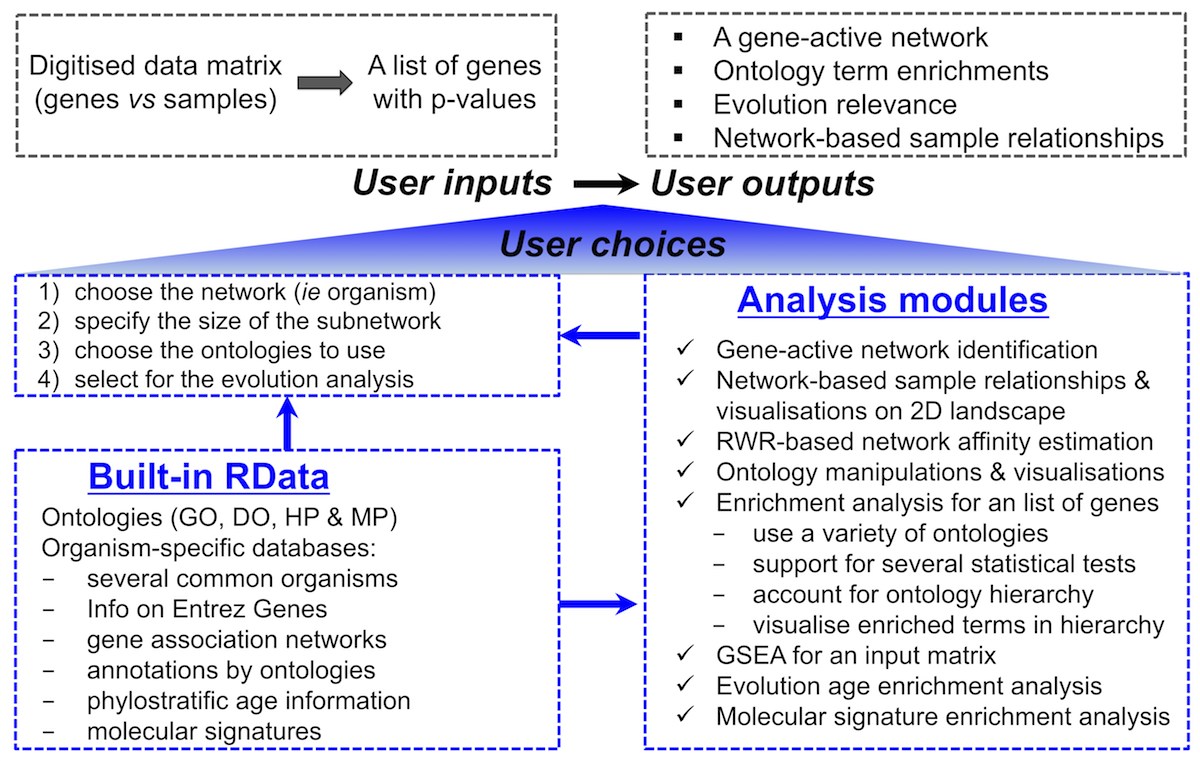Installation
1. R requirement
R (http://www.r-project.org) is a language and environment for statistical computing and graphics. We assume R (version 3.1.0 or higher) has been installed in your local machine. The latest version can be installed following instructions below for different platforms (Windows, Mac, and Linux).
- Quick link for
Windows: Download R for Windows. Quick link for
Mac: Download R for Mac OS X 10.6 (Snow Leopard or higher).Below are
shell command lines in Terminal(forLinux):
Assume you have a ROOT (sudo) privilege:
sudo su
# here enter your password
wget http://www.stats.bris.ac.uk/R/src/base/R-3/R-3.2.4.tar.gz
tar xvfz R-3.2.4.tar.gz
cd R-3.2.4
./configure
make
make check
make install
R # start R
Assume you do not have a ROOT privilege and want R installation under your home directory ($HOME):
wget http://www.stats.bris.ac.uk/R/src/base/R-3/R-3.2.4.tar.gz
tar xvfz R-3.2.4.tar.gz
cd R-3.2.4
./configure --prefix=$HOME/R-3.2.4
make
make check
make install
$HOME/R-3.2.4/bin/R # start R
2. Installation of the package
Notes: below are R command lines (NOT shell command lines in Terminal).
First, install dependant/imported/suggested packages:
source("http://bioconductor.org/biocLite.R")
biocLite(c("hexbin","ape","supraHex","graph","Rgraphviz","igraph","Biobase","limma","survival","foreach","doMC","devtools"))
Second, install the package dnet under stable release version hosted in CRAN:
install.packages("dnet",repos="http://cran.r-project.org",type="source")
Third (highly recommended), update the package dnet from latest development version hosted in GitHub:
library(devtools)
if("dnet" %in% rownames(installed.packages())) remove.packages("dnet")
install_github(c("hfang-bristol/dnet"))
3. Workflow of the package
It provides a brief overview of how the package operates and what you expect to get from it.
